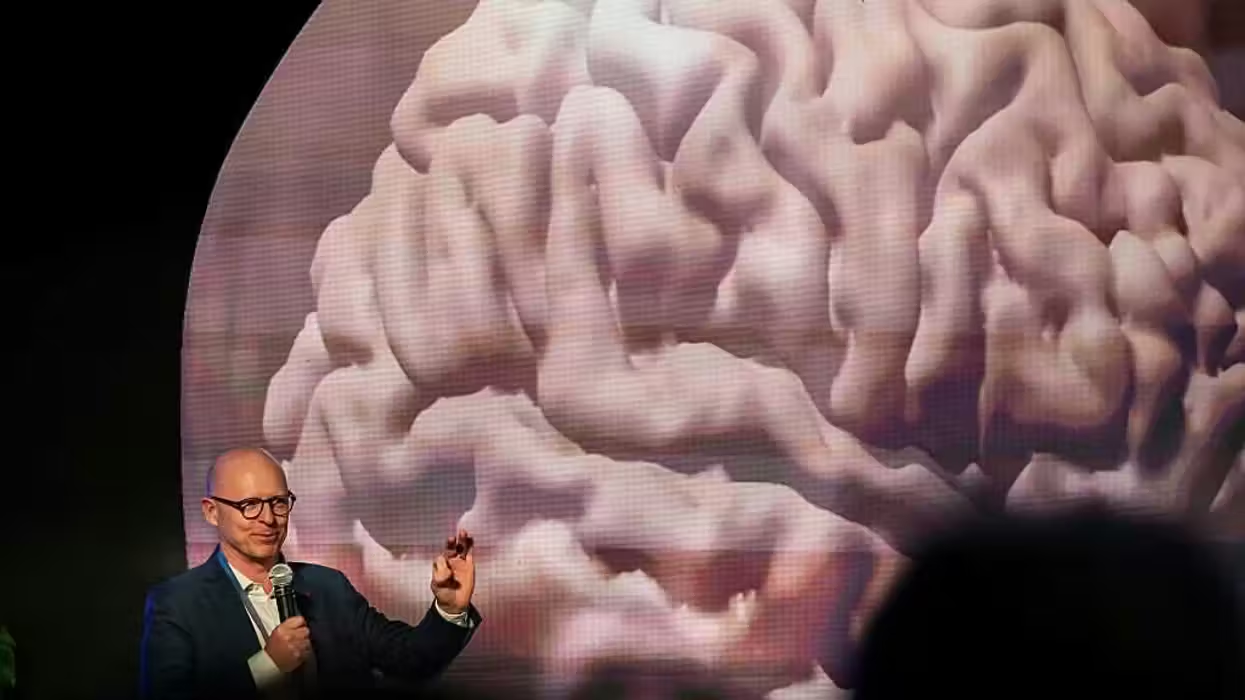
© 2025 Blaze Media LLC. All rights reserved.
"Fission power technology can be applied on Earth's Moon, on Mars, or wherever. . ."
Bye-Bye sunlight. Step aside fuel cells. Nuclear power to produce electricity could soon be the new 'it' source of energy for manned and unmanned bases on the Moon, Mars and other planets.
Nuclear fission will be more reliable and abundant as the need in space for energy may grow. Science Daily reported the story released by the American Chemical Society's annual meeting:
"The biggest difference between solar and nuclear reactors is that nuclear reactors can produce power in any environment," Werner explained. "Fission power technology doesn't rely on sunlight, making it able to produce large, steady amounts of power at night or in harsh environments like those found on the Moon or Mars. A fission power system on the Moon could generate 40 kilowatts or more of electric power, approximately the same amount of energy needed to power eight houses on Earth." In addition, he said that a fission power system could operate in a variety of locations such as in craters, canyons or caves."The main point is that nuclear power has the ability to provide a power-rich environment to the astronauts or science packages anywhere in our solar system and that this technology is mature, affordable and safe to use," [project leader James Werner] said.
According to NASA's website, here are some of the downfalls of solar power for rockets that have made nuclear fission a more attractive source:
- As one travels farther and farther from the Sun, it grows dimmer and dimmer. By the time a spacecraft arrives at Neptune or Pluto, the Sun looks more like a bright star than like the great glowing globe we are familiar with on Earth.
- An array of solar panels that would run a probe, a base, or a very complex rover on the Moon or Mars would be bulky and an easy target for meteorites. On Mars, the array would also face sandstorms.
- The lunar night lasts about two weeks. A lunar base depending on solar panels would need to charge banks of bulky, heavy batteries to cover that long stretch, which would take more panels than just those needed to run the base.
NASA also acknowledges that a liquid fueled rocket can only travel eight miles per second.
In cooperation with NASA and the U.S. Department of Energy, a technology demonstration of the unit for space is expected for 2012. Though similar to nuclear power systems on Earth, the space systems will look, well, like they're from space:
"People would never recognize the fission power system as a nuclear power reactor," said Werner. "The reactor itself may be about 1 ½ feet wide by 2 ½ feet high, about the size of a carry-on suitcase. There are no cooling towers. A fission power system is a compact, reliable, safe system that may be critical to the establishment of outposts or habitats on other planets. Fission power technology can be applied on Earth's Moon, on Mars, or wherever NASA sees the need for continuous power."
According to a release announcing the project in 2008, testing of the non-nuclear demonstration project will help verify system performance projections, develop safe and reliable control methods, gain valuable operating experience and reduce technology and programmatic risks.
Once the technology is refined, Werner said this would be one of the most affordable power sources for long-term base operations in space.
Want to leave a tip?
We answer to you. Help keep our content free of advertisers and big tech censorship by leaving a tip today.
Want to join the conversation?
Already a subscriber?
more stories
Sign up for the Blaze newsletter
By signing up, you agree to our Privacy Policy and Terms of Use, and agree to receive content that may sometimes include advertisements. You may opt out at any time.
Related Content
© 2025 Blaze Media LLC. All rights reserved.
Get the stories that matter most delivered directly to your inbox.
By signing up, you agree to our Privacy Policy and Terms of Use, and agree to receive content that may sometimes include advertisements. You may opt out at any time.





